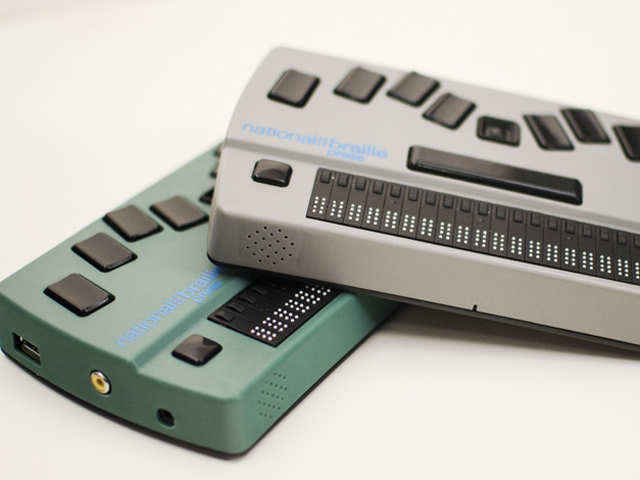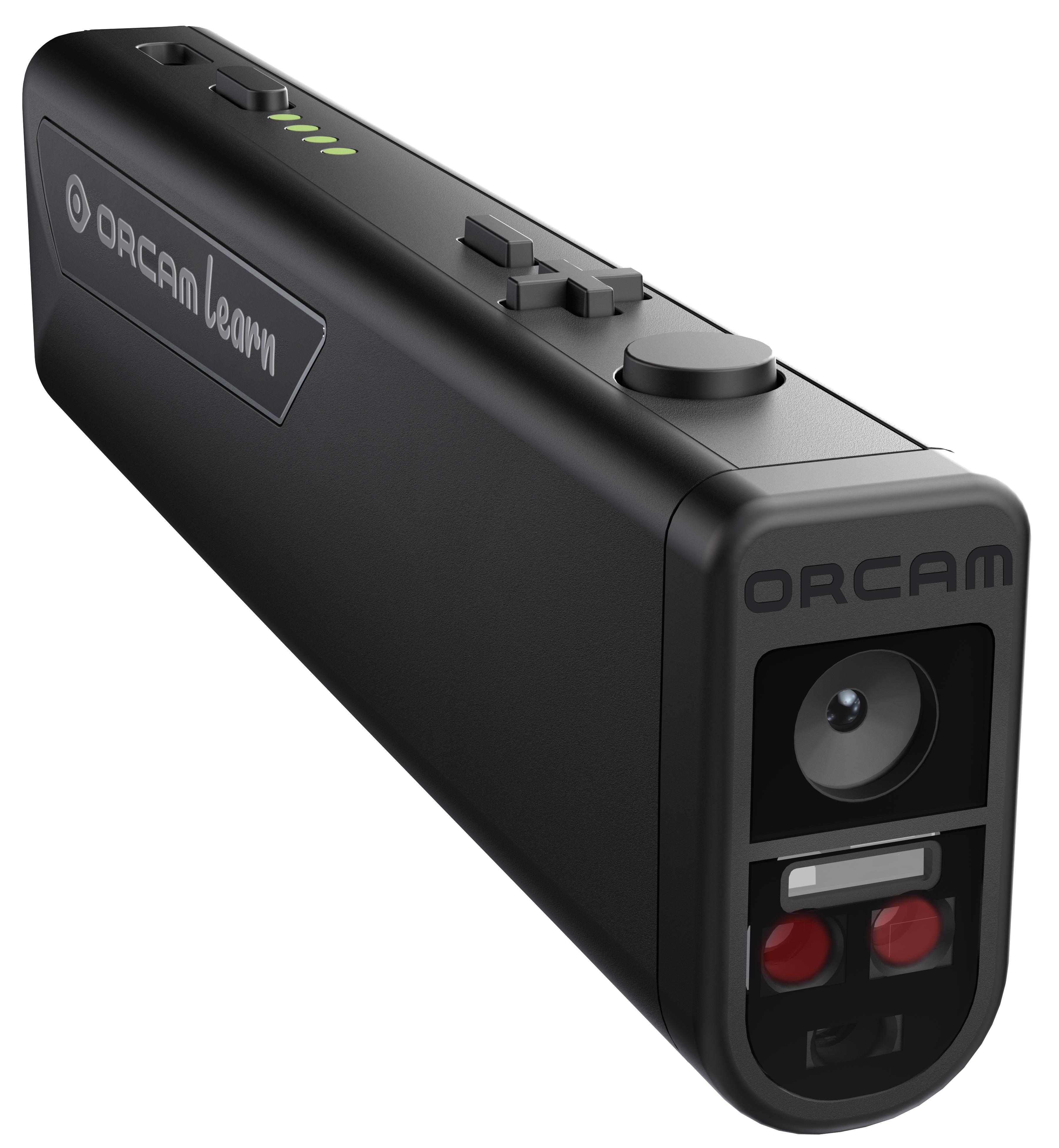Mobility Aids for Visually Impaired Users: Navigating the World with Confidence
Mobility Aids for Visually Impaired Users: Navigating the World with Confidence
Blog Article
Discover Innovative Devices Made for the Visually Impaired
The advancement of cutting-edge tools for the aesthetically impaired represents a substantial advancement in accessibility and freedom. Technologies such as clever glasses with AI capacities and mobile applications designed to supply acoustic summaries are reshaping daily experiences for customers. In addition, wearable tools that utilize haptic responses improve environmental awareness, while modern-day Braille innovations use brand-new means to engage with message. As these tools continue to advance, their influence on the lives of those with aesthetic problems increases essential questions regarding the future of inclusivity and autonomy in different elements of life. What exists ahead in this technological landscape?
Smart Glasses for Navigating

Smart glasses designed for navigation are changing the method visually impaired people engage with their environment. These innovative devices use a mix of cam innovation, artificial knowledge, and auditory responses to give real-time info about environments. By using challenge detection systems, smart glasses can signal individuals to potential threats, allowing much safer flexibility in both familiar and unknown setups.
The assimilation of GPS technology additionally boosts navigating capabilities, allowing users to get acoustic directions as they relocate. This hands-free technique not just promotes self-reliance yet likewise encourages aesthetically damaged people to navigate metropolitan landscapes with raised confidence. Furthermore, numerous wise glasses are outfitted with features that identify landmarks and road indicators, offering contextual details that enhances the customer experience.
Moreover, the development of these tools is constantly advancing, with business working to improve the accuracy of object recognition and increase the series of navigational functions. As clever glasses end up being much more obtainable and cost effective, they hold the potential to substantially change day-to-day life for visually impaired individuals. Eventually, these cutting-edge devices stand for a vital step toward inclusivity, offering improved wheelchair and a better sense of freedom for individuals browsing the globe around them.

Mobile Application for Daily Living
How can mobile applications boost the day-to-days live of visually impaired individuals? Mobile applications are transforming the means visually impaired customers browse their atmospheres, handle day-to-day tasks, and gain access to details. These applications offer important support through different capabilities, fostering self-reliance and boosting lifestyle.
Numerous cutting-edge mobile applications are made specifically for daily living. For example, applications like Be My Eyes link aesthetically damaged customers with sighted volunteers through video telephone calls, permitting them to get real-time support with tasks such as checking out tags or browsing unknown rooms. Similarly, Seeing AI, established by Microsoft, utilizes expert system to describe environments, reviewed message, and identify objects, efficiently transforming a smart device right into an effective device for everyday aid.
Furthermore, navigating applications tailored for the visually impaired, such as Aira and BlindSquare, supply audio-based directions and environmental details, making it possible for individuals to traverse their surroundings safely and confidently. Past navigation and immediate assistance, mobile apps likewise support company and task management, with attributes that aid individuals set suggestions, develop order of business, and track visits. In summary, mobile applications function as vital resources, equipping aesthetically impaired people to lead more independent and fulfilling lives.
Wearable Technologies for Assistance
Empowerment with modern technology is progressively apparent in the realm of wearable tools created to assist visually impaired individuals. These innovative tools integrate effortlessly into everyday life, improving navigation and supplying crucial feedback to customers. Wise glasses outfitted with cameras can check out and identify faces text aloud, permitting customers to connect even more confidently in professional and social settings.
One more remarkable improvement is using haptic comments systems in wearable devices. These systems utilize vibrations or various other responsive signals to share information regarding the individual's setting, such as barriers or changes in terrain, enhancing movement and security. Wearable modern technologies also include wristbands that link to mobile phones, notifying individuals to alerts via refined resonances, therefore improving connection without dependence on visual cues.
As these innovations remain to progress, they are not just improving freedom for aesthetically damaged people yet additionally cultivating a better sense of addition in society. By connecting the gap between challenges faced in everyday living and the capacity for autonomy, wearable modern technologies function as critical tools in the quest for equal rights and empowerment for those with aesthetic disabilities.
Audio Summary Tools
Audio description devices play a why not check here vital function in improving availability for visually impaired individuals, giving them with the capacity to involve with visual media. Assistive technology for the blind. These devices provide narrated descriptions of key aesthetic elements in movies, television shows, and live efficiencies, making certain that individuals can completely understand the reference context and emotions shared through visuals
Sound description can be incorporated right into various systems, including streaming solutions, cinema testings, and live theater. Lots of prominent streaming solutions now consist of audio description as an ease of access function, permitting customers to select it quickly. Along with traditional media, specialized applications additionally exist, providing audio summaries for art exhibitions, galleries, and other cultural occasions.
The efficiency of audio summary depends upon the skill of the storytellers, who should convey aesthetic details succinctly without detracting from the initial audio. Advancements in this area are likewise leading the way for more customized experiences, where customers can adjust the level of information and pacing according to their preferences.
Braille Innovations and Devices
Braille devices and advancements have actually considerably changed the means visually impaired people interact with text and details. Modern advancements have led to the advancement of versatile devices that enhance literacy and self-reliance amongst users.
Furthermore, mobile Braille notetakers combine typical Braille input with modern performances, assisting in note-taking, organizing, and record modifying on the go. AI-powered visual aids. These portable tools often feature text-to-speech capabilities, bridging the gap between Braille and acoustic details
On top of that, cutting-edge Braille printers have actually arised, permitting individuals to create Braille tags, records, and instructional products successfully. This access cultivates higher involvement in professional and instructional settings, inevitably advertising inclusivity.
Additionally, research into wise Braille innovations continues to expand. Instruments that include man-made intelligence are being explored to offer real-time navigation support and contextual info, enhancing the individual experience in diverse settings. On the whole, these innovations mirror a commitment to empowering aesthetically impaired people through modern technology, guaranteeing they can easily accessibility and engage with the world around them.

Final Thought
The innovation of cutting-edge devices for the aesthetically impaired substantially improves self-reliance and high quality of life. fun glasses frames Smart glasses, mobile applications, wearable innovations, audio description tools, and Braille developments collectively encourage people by giving crucial navigating help, environmental understanding, and improved analysis experiences. These modern technologies not just foster greater addition however likewise advertise autonomy in day-to-day activities, eventually contributing to a more fair and available culture for visually impaired people. Proceeded advancement in this field holds assurance for more enhancements.
As clever glasses end up being more budget-friendly and available, they hold the possible to considerably change daily life for visually damaged users. Mobile apps are revolutionizing the method aesthetically impaired individuals browse their environments, handle everyday tasks, and accessibility info. Applications like Be My Eyes attach visually impaired customers with sighted volunteers via video telephone calls, enabling them to obtain real-time assistance with tasks such as checking out tags or browsing unfamiliar areas.Furthermore, navigating applications tailored for the visually impaired, such as Aira and BlindSquare, use audio-based instructions and ecological information, allowing users to traverse their surroundings safely and confidently.The improvement of cutting-edge devices for the aesthetically damaged significantly boosts self-reliance and high quality of life.
Report this page